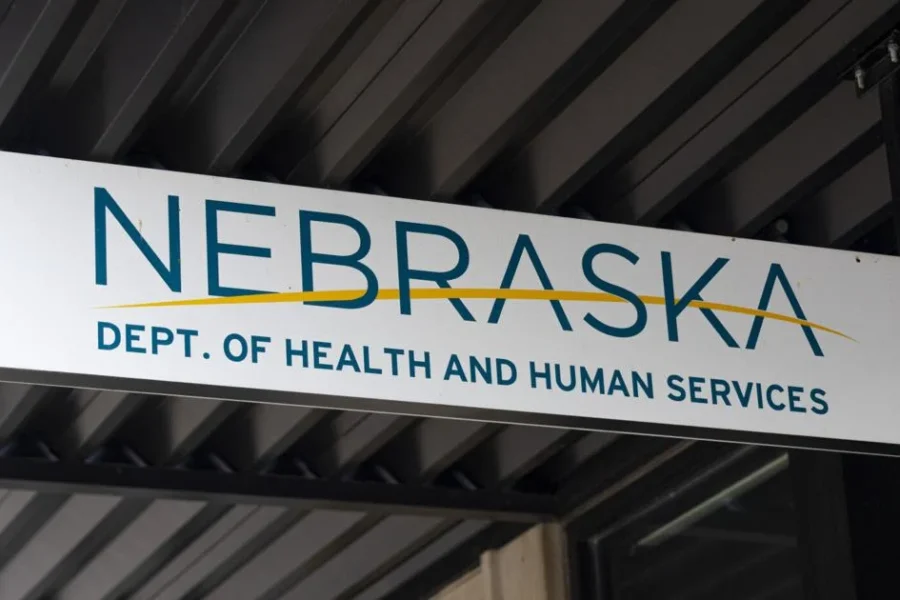Introduction
On December 1, 2021, the Supreme Court will hear oral argument in Dobbs v. Jackson Women’s Health Organization. Dobbs is perhaps the most significant abortion case in the Supreme Court since Planned Parenthood of Southeastern Pennsylvania v. Casey in 1992. In Dobbs, the Court will decide “[w]hether all pre-viability prohibitions on elective abortions are unconstitutional.” As Mississippi argues with clarity and force:
On a sound understanding of the Constitution, the answer to the question presented in this case is clear and the path to that answer is straight. Under the Constitution, may a State prohibit elective abortions before viability? Yes. Why? Because nothing in constitutional text, structure, history, or tradition supports a right to abortion. A prohibition on elective abortions is therefore constitutional if it satisfies the rational-basis review that applies to all laws.
From Roe to Dobbs: Abortion Law in the United States
Dobbs challenges Roe v. Wade and Planned Parenthood v. Casey, which manufacture a woman’s right to abortion. Roe found that the “right of privacy…is broad enough to encompass a woman’s decision whether or not to terminate her pregnancy.” In Casey, the Supreme Court identified abortion as a substantive due process right and reaffirmed that “The woman’s right to terminate her pregnancy before viability is the most central principle of Roe v. Wade. It is a rule of law and a component of liberty we cannot renounce.” Casey instituted the “undue burden standard” to assess whether an abortion regulation is unconstitutional, which the Court called “shorthand for the conclusion that a state regulation has the purpose or effect of placing a substantial obstacle in the path of a woman seeking an abortion of a nonviable fetus.”
Fast forward past Supreme Court decisions that limited, expanded, and again contracted the undue burden standard, and Dobbs returns to the issue of whether abortion law is workable. As Mississippi reasons, “Roe and Casey are so clearly wrong that respondents could not hope to show that they are correct as a matter of constitutional text, structure, history, or tradition.” “Roe and Casey are thus at odds with the straight-forward, constitutionally grounded answer to the question presented. So the question becomes whether this Court should overrule those decisions. It should.”
Dobbs Facts and Case History
Dobbs concerns Mississippi’s Gestational Age Act, which limits abortions at fifteen weeks gestation to medical emergencies and cases of severe fetal disability. With the Act, Mississippi “protects the health of mothers, the dignity of unborn children, and the integrity of the medical profession and society.” The Mississippi legislature passed the Gestational Age Act in 2018, and it took effect immediately when Governor Phil Bryant signed the bill into law on March 19, 2018. Jackson Women’s Health Organization, the sole abortion clinic in Mississippi, and one of its doctors filed suit in federal court to block the law on the day it took effect.
Over Mississippi’s objections, the district court permitted only limited discovery related to a single issue: “‘whether the 15-week mark is before or after viability.’” Under Casey, the district court found “States may not ban abortions prior to viability; 15 weeks lmp [last menstrual period] is prior to viability; and plaintiffs provide abortion services to Mississippi residents after 15 weeks lmp. As the facts establish, the Act is unlawful.” Similarly, the court determined “There is no legitimate state interest strong enough, prior to viability, to justify a ban on abortions.”
The Fifth Circuit Court of Appeals affirmed the district court decision, holding that Roe and Casey create a categorical right to a pre-viability abortion. Accordingly, the 15-week law infringes on that right because it operates as a “ban on certain pre-viability abortions.” The court also affirmed the district court’s discovery and evidentiary rulings, explaining that this result “flows from our holding that the Act unconstitutionally bans pre-viability abortions.”
The Supreme Court will now determine “[w]hether all pre-viability prohibitions on elective abortions are unconstitutional.” This question implicates the workability of Casey’s undue burden standard, which relies on an arbitrary viability line, disallowing regulations that “ha[ve] the purpose or effect of placing a substantial obstacle in the path of a woman seeking an abortion of a nonviable fetus.” Viability is key to the undue burden standard.
What the Parties Will Argue on December 1st
During oral argument, Mississippi will have thirty-five minutes to present its position. Jackson Women’s Health Organization will have 20 minutes. The Supreme Court also has granted fifteen minutes to the U.S. Solicitor General, who will argue in support of Jackson Women’s Health Organization.
Underlying the viability issue is stare decisis doctrine. Stare decisis is Latin for “to stand by things decided,” or to uphold settled precedents. In Dobbs, the Supreme Court must determine whether to adhere to precedents (i.e., Roe and Casey) under stare decisis doctrine, or whether it should overrule these cases because they are unworkable. Here are some of the parties’ arguments.
Mississippi is asking the Supreme Court to reverse Roe and Casey, or at least to reject the viability line. According to Mississippi, “Roe and Casey are profoundly unprincipled decisions that have damaged the democratic process, poisoned our national discourse, plagued the law, and harmed the perception of this Court.” Similarly, “Each explanation [of the viability line] boils down to a
circular assertion: when an unborn child can live outside the womb then the State’s interest is compelling because the unborn child can live outside the womb. That explanation ‘mistake[s] a definition for a syllogism’ and is linked to nothing in the Constitution.”
Jackson Women’s Health Organization contends Roe and Casey’s “central principle” is the viability line, and “this Court has consistently held that the Constitution guarantees ‘the right of the woman to choose to have an abortion before viability.’” According to the abortion business, the viability line is clear and workable, and remains critical to women’s equal participation in society. JWHO further argues that Mississippi has not offered an alternative litigation test to the viability line.
The United States argues Casey reaffirmed Roe’s central holding that a State may not prohibit pre-viability abortions. Under stare decisis, the Supreme Court must adhere to Roe and Casey, which, according to the United States, were decided correctly.
What Amici Curiae Have Said About This Case
More than eighty pro-life amici curiae (“friends of the court”) filed briefs in Dobbs. Here are some highlights of their briefs:
- Americans United for Life notes that the Supreme Court does not need to adhere to precedent when case law is unsettled. Roe v. Wade is radically unsettled and, thus, the Court does not need to adhere to it.
- 228 Members of Congress, in a brief also authored by AUL, argue the Supreme Court has failed to clarify the meaning of the viability line or provide reliable guidance on its role in the standard of review. A categorical prohibition on pre-viability abortion regulations inhibits lawmakers from furthering critical state interests.
- Professor Joseph W. Dellapenna, the foremost historian of abortion, discusses how courts have relied on a deliberately distorted history of abortion. The English and American legal understanding before the adoption of the Fourteenth Amendment was that abortion killed a child at any stage of fetal development.
- Professor Randy Beck, a constitutional law professor and expert in abortion jurisprudence, describes how the Roe Court embraced the arbitrary viability rule in dictum without briefing or justification. The Casey Court failed to justify the viability rule and reaffirmed it through conclusory and unsupported assertions.
- 141 International Legal Scholars examine how international law offers no basis for the existence of a human right to abortion. Under international law, sovereign states have the right to protect unborn lives, and most states restrict abortion more heavily than Mississippi.
More than fifty amici curiae filed briefs in support of Jackson Women’s Health Organization. Their arguments include:
- 236 Members of Congress argue the U.S. Constitution protects the right to decide whether and when to have a child, and the right to effectuate that decision. State legislators are undermining public confidence in the rule of law by intentionally defying this Court’s rulings.
- The American Civil Liberties Union maintains the constitutional right to decide whether to have an abortion is firmly rooted in the Constitution and the Supreme Court’s jurisprudence. The fact that courts have had to enforce the constitutional right to decide whether to have an abortion does not justify overturning Roe and Casey.
- The American College of Obstetricians and Gynecologists contend abortion is a safe, common, and essential component of health care. The Act will harm, not improve, pregnant patients’ health.
Possible Outcomes
Dobbs has a few possible outcomes. The worst-case scenario may result if the Supreme Court takes the issue presented literally—whether all pre-viability prohibitions on elective abortions are unconstitutional—and simply reaffirms Casey’s undue burden standard as a flat ban on pre-viability abortions. This option seems unlikely. Casey’s undue burden standard has proved incoherent and inconsistent, and, as Justice Scalia described, “[Casey’s undue burden standard]’s verbal shell game… conceal[s] raw judicial policy choices concerning what is ‘appropriate’ abortion legislation.”
The best-case scenario in Dobbs would be that a majority of the Court answers “no” to the question and holds the Act is facially constitutional. This would require overturning Casey and at least partially overturning Roe. Without Casey, the only part remaining of Roe would be that “Th[e] right of privacy…is broad enough to encompass a woman’s decision whether or not to terminate her pregnancy.” Without a litigation test, there would be uncertainty as to how courts would determine whether an abortion law violates this purported constitutional right.
If the Court were to overturn Roe as well as Casey, abortion would not become illegal. Overturning Roe does not automatically criminalize abortion. It merely returns the abortion debate to the states and democratic process. In a post-Roe world, abortion regulations will vary state by state.
A likely scenario for Dobbs is that the Supreme Court will simply answer “No” to the issue presented, without reaching the merits of the Mississippi law. In this scenario, the Court would return the case to the lower court to decide whether the Act is constitutional. However, this result would open a litigation floodgate for various abortion regulations throughout the United States, including dismemberment, heartbeat limits, and “personhood” provisions.
Other possible outcomes include plurality decisions or splintered opinions that do not provide clear guidance on what abortion regulations are constitutional. The Court also may mint a new standard of review for abortion regulations. The oral argument on December 1st will give us a better sense of how the Court intends to rule in Dobbs.
Conclusion
For almost fifty years, Roe v. Wade has been unsettled in the courts. The viability line in Casey’s undue burden test is arbitrary and unworkable, preventing states from legislating for the health of pregnant women, integrity of the medical profession, and dignity of unborn children. With the disarray of abortion case law, it is likely that the Supreme Court will limit, if not outright overturn, Casey’s undue burden standard and possibly Roe v. Wade in Dobbs v. Jackson Women’s Health Organization.




